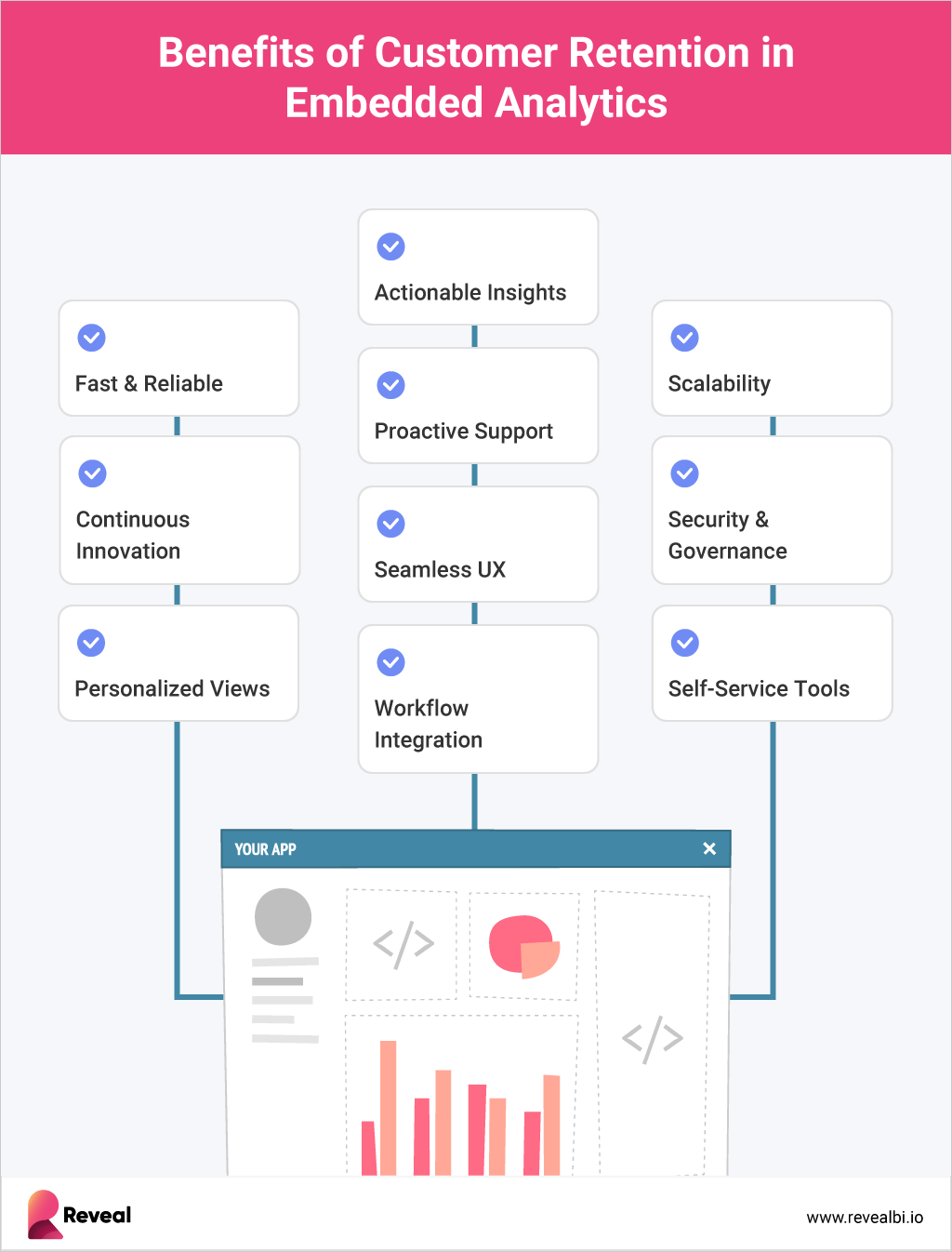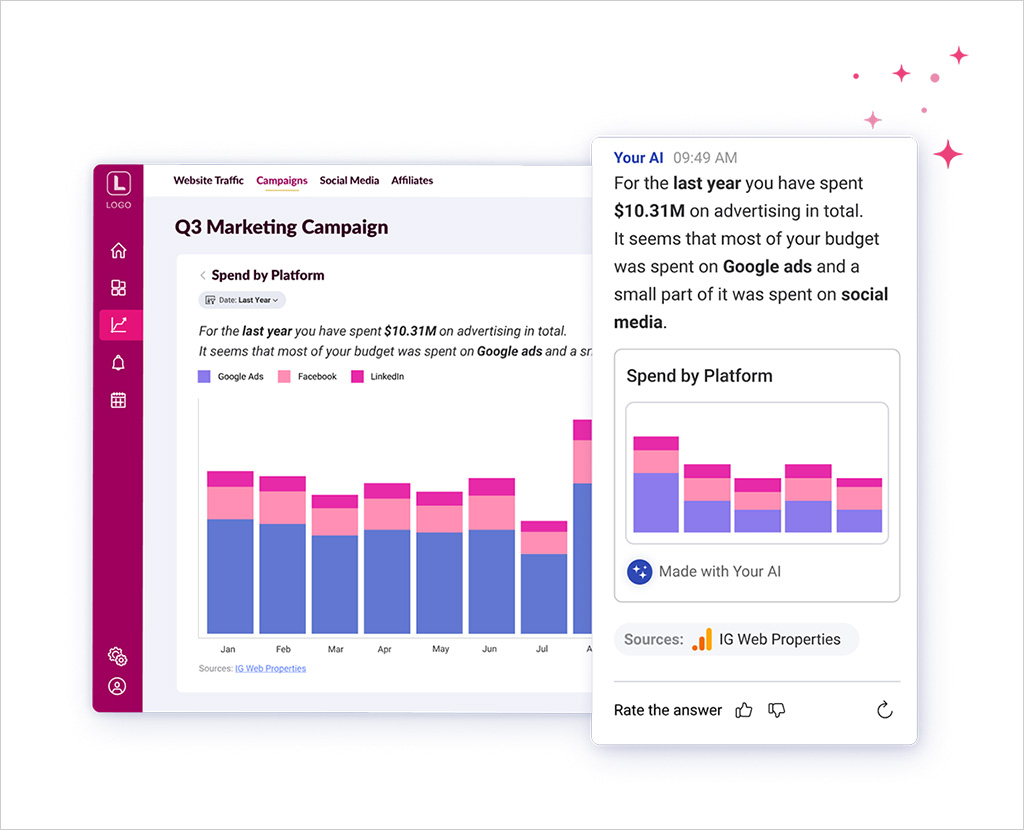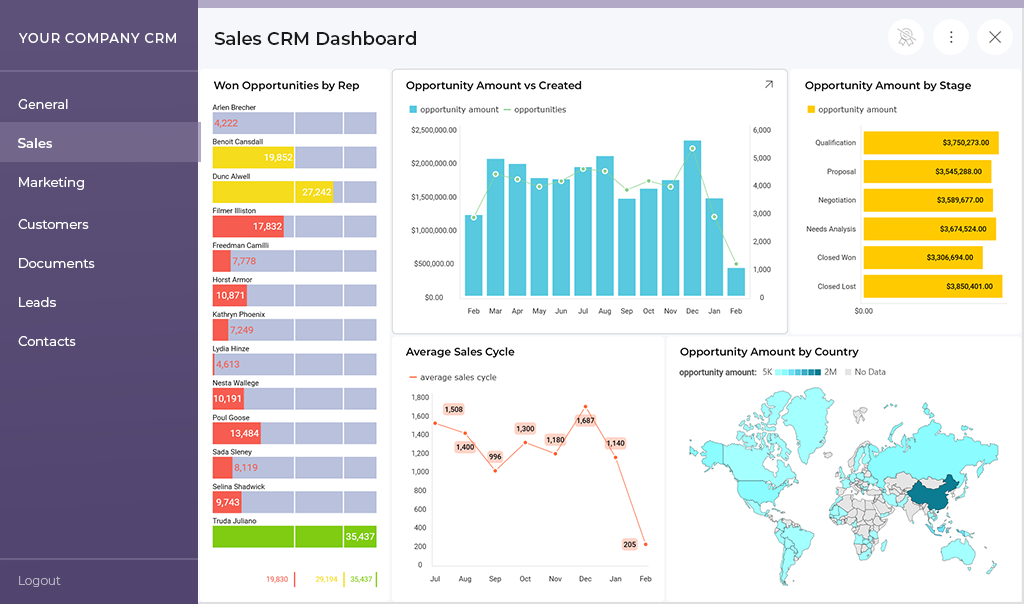
Scriptly Helps Pharmacies Identify Trends in Real Time with Reveal
Churn happens when users lose sight of value. Customer retention with embedded analytics means showing outcomes where they matter—inside your product. This guide breaks down how SaaS teams use real-time dashboards, role-based insights, and self-service tools to keep users engaged and reduce churn. See how platforms like Reveal make retention scalable, measurable, and built into the experience.
Executive Summary:
Key Takeaways:
Churn isn’t just a product metric. It’s a signal that your app isn’t delivering visible value. And in a saturated market, visibility is everything. If users don’t see progress, they stop logging in. If outcomes aren’t clear, they cancel.
That’s why more SaaS teams are investing in customer retention with embedded analytics. By embedding real-time analytics, interactive dashboards, and contextual insights into the product experience, they give users clear proof that the product is evolving with their needs in mind.
This clarity improves UX, builds trust, and reduces churn without extra support overhead. In 2025, 81% of data analytics users rely on embedded analytics to surface value inside the app before users even think to ask for it.
In this article, we’ll break down how embedded analytics for SaaS retention improves engagement, strengthens product stickiness, and makes churn a less likely outcome.
Churn doesn’t just cut into your renewal rates. It slows down growth, increases acquisition costs, and limits your ability to forecast revenue. For most SaaS teams, improving customer retention is a faster, more reliable path to profitability than adding new logos.
But churn rarely starts with a cancellation email. It begins earlier, when users stop seeing results. They skip logins, ignore updates, and stop exploring features. When customers don’t know what’s working, they assume nothing is.
This disconnect often comes down to one missing layer—insight. Without clear, in-app feedback, users can’t connect product usage to business outcomes. They lose context. They disengage. And once that happens, upsell opportunities fade and win-back efforts get expensive fast.
SaaS companies also struggle to react in a timely manner. Product and CS teams rely on lagging indicators or wait for support tickets. That reactive model gives churn a head start. It also makes it harder to deliver targeted success interventions or flag high-risk accounts.

Companies that invest in customer retention with embedded analytics take a different approach. They use data to keep customers informed, engaged, and successful. With usage-based dashboards and real-time analytics, they show value as it happens, not just during QBRs.
In a recent survey, only 13% of tech leaders said they use data to improve decision-making and resource use. That leaves most teams guessing—and losing customers they could have retained.
To reduce churn with embedded analytics and drive growth, you need to close that gap. You need to make results visible inside the product and give every user a reason to keep going.
Retention improves when users see value without needing to dig for it. Embedded analytics turns insight into part of the product experience. It shows outcomes in real time, points users toward actions that work, and gives CS teams visibility before churn takes hold.
This kind of visibility improves UX. It increases trust, strengthens feature adoption, and gives every stakeholder a reason to stay. Here’s how it works inside the product to reduce churn with embedded analytics and drive loyalty.
Users won’t explore features they don’t understand. Interactive dashboards built into the product highlight activity, usage, and outcomes. When users see what’s working, they naturally focus on what drives results.
This way, a product team can improve adoption by embedding dashboards directly into the onboarding flow. Instead of sending users to docs, they can use peer usage data to show how others found success with key features. That shift will increase activation and long-term retention.

You can’t fix what you can’t see. Real-time analytics gives CS teams early warning. Combined with AI-powered analytics, they can flag drop-offs, missed milestones, or at-risk accounts before contracts come up for renewal.
These alerts let teams intervene with the right support at the right time. Retention becomes proactive instead of reactive.
Users who don’t see outcomes leave. Contextual insights highlight progress, patterns, and wins in a format users can interpret without analyst support. Self-service BI Dashboards don’t just present raw data. They tell a data-driven story that reinforces value.
This creates a feedback loop inside the product. Users engage more when they see progress, especially when it connects directly to business outcomes.
If analytics feel disconnected, users won’t trust them. With white-label analytics, teams can deliver fully branded dashboards that match the product’s look and behavior. The insights feel native, not third-party.
This consistency matters. It builds confidence in the data, strengthens your brand, and eliminates friction around usability and accuracy. Well-built white-label customer dashboards become part of the product, not just a feature bolted on later.
Reducing churn isn’t just about spotting what went wrong. It’s about surfacing the right insights at the right time—inside the product. That’s how you build trust, show value, and keep users engaged. And that’s what customer retention with embedded analytics is designed to do.
Here are five tactical ways SaaS teams are using embedded analytics to drive loyalty, improve outcomes, and keep customers coming back.
Understanding user behavior is where retention begins. With embedded analytics integrated directly into your product, you can monitor logins, usage frequency, and drop-off points without switching platforms or exporting reports.
These dashboards visualize how users move through the product. They show what features are gaining traction, which flows are underused, and where friction builds. When tied to reliable data sources, that visibility becomes actionable.
CS and product teams can set internal alerts for stalled adoption or missed milestones. That early warning helps you respond quickly, not months later during renewal.
This is one of the most effective ways to reduce churn with embedded analytics. You act on actual user behavior instead of gut instinct.
Generic reporting doesn’t help users connect to outcomes. They want tailored, relevant feedback that aligns with their goals. That’s where embedded analytics creates an edge.
Scriptly, a pharmacy SaaS provider, used Reveal to build live dashboards that track prescription trends per customer. Instead of static reports, users saw real-time performance inside the platform, filtered by their own inputs.
The result? Higher engagement. Customers returned more often, stayed active longer, and didn’t need to ask for updates. This is what customer retention with embedded analytics looks like in practice—real-time, personalized insight that proves value on every login.

Not every user wants the same view. Executives want KPIs. Admins want control. End users want outcomes. Trying to solve all three with one dashboard leads to noise and confusion.
Role-based dashboards fix that. With embedded SDK, teams can configure dashboards to fit the needs of each persona, without duplicating charts or logic. You define the layout, apply filters, and control access by role.
This keeps analytics focused. Each stakeholder sees what they need and nothing they don’t. That clarity improves UX, accelerates adoption, and helps retain power users and casual users alike.
Users don’t want to file a ticket for every metric. They want to explore, filter, and customize insights on their own. That’s why self-service functionality is a core part of any retention strategy.
Reveal includes built-in embedded analytics features that support drill-downs, chart editing, data exports, and filtering—without writing code. With no-code/low-code setup, teams can launch these tools quickly and avoid long dev cycles.
Empowered users are more likely to find value and stick with your product. Self-service keeps them engaged and reduces the load on support and success teams.
Churn begins when customers fall off the path to value. With embedded analytics, you can build real-time health scores that track onboarding completion, product usage, and engagement trends.
These signals can trigger automated playbooks. For example, if a user skips a key feature in week one, the system can flag them for outreach. If an account crosses a usage threshold, it can notify sales about a possible expansion.
With embedded automation workflows, retention becomes scalable. You reduce churn by intervening earlier, and you drive expansion by acting at the right time.
Customer retention doesn’t happen at renewal. It happens inside your product when users can see outcomes, measure progress, and stay engaged with real-time insight.
That’s why customer retention with embedded analytics is now a product priority. It gives you the ability to show results clearly, flag risk early, and keep users connected to the value your app delivers.
Reveal helps SaaS teams build that experience without slowing development. It embeds retention into your product workflow, where it actually drives impact.
Here’s how Reveal helps you reduce churn with embedded analytics built for real teams:
Retention improves when results are visible. Reveal helps you make that happen, so your customers keep showing up, logging in, and staying loyal.
Back to Top